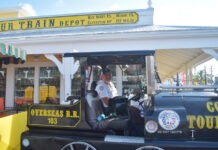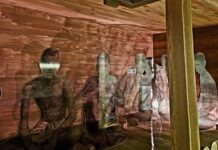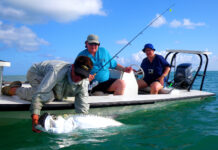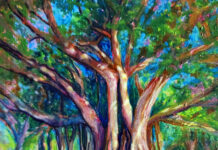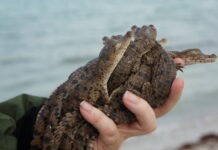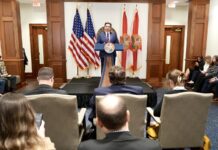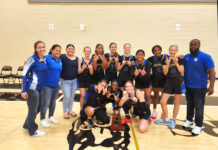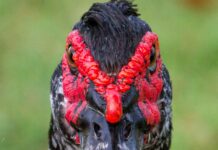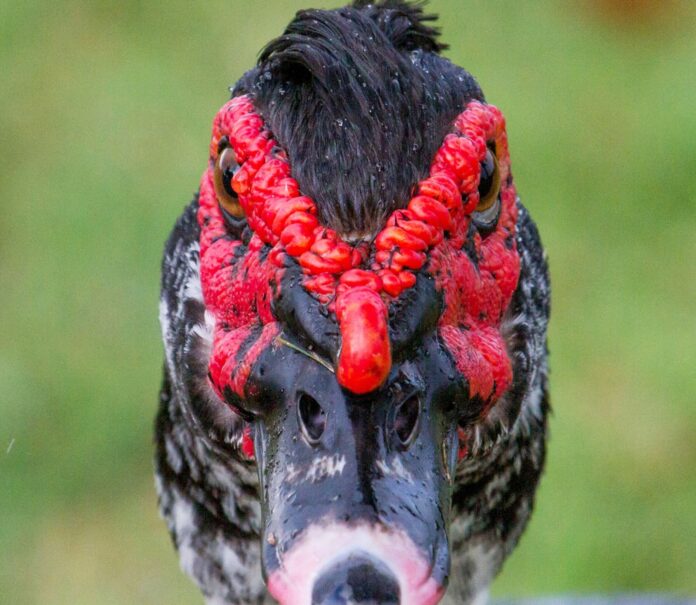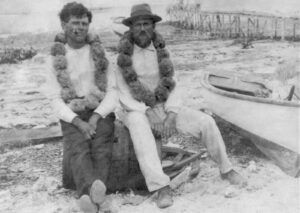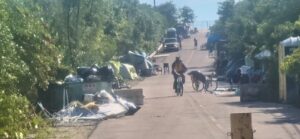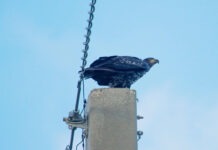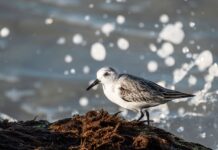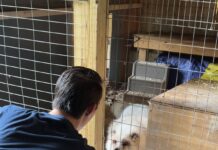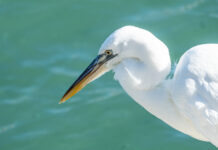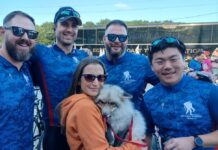The things that freak people out about Muscovy ducks are the caruncles, sometimes called wattles – the prominent, bright red, fleshy bits on their faces. The Cornell Lab of Ornithology’s usually non-judgmental “All About Birds” web page goes so far as to call Muscovies “strange” and “warty-faced.” The National Audubon Society’s page refers to them as “dumpy.”
I thought of this the other day as I passed by a small mixed flock of white ibis, chickens and Muscovies along the edge of the golf course pond that abuts College Road on Stock Island.
Ugliness seems to be a matter of perspective, though.
While they look like mutants to us, a male Muscovy duck with a lot of caruncles is a bird with a lot of testosterone, and one with a lot of testosterone tends to be healthier and have good genes, and therefore more, uh, breeding options.
Muscovies are the largest duck species in the Americas, and highly sexually dimorphic. With all that testosterone, of course, the males are the ones with the most caruncles. They are also usually about one-and-a-half times the size of the females, and can weigh up to 15 pounds. They are also polygynous, with the male having multiple mates at the same time and the females forming a harem (a term I’m guessing will be considered outdated one of these days).
One man’s weird, though, is another duck’s beautiful … or at least reproductively fit.
Caruncles are generally found in birds that evolved in warmer climates, and can help with thermoregulation, beating the heat through increased blood flow and convection. It is also thought that a healthy set of caruncles is associated with birds who are more resistant to disease.
I’ve only seen wild Muscovy ducks once, out the window of a fast-moving van on a dirt road in the Rupununi Savannah in Guyana. They flew parallel to us for a while, but it was impossible to tell how caruncle-y they were.
Their natural habitat is most of South and Central America, edging up toward the U.S. border.
Back in the day, if you wanted to see them in North America and check them off on your American Birding Association life list, you had to stand on the banks of the Rio Grande River in southern Texas and hope a flying or swimming bird strayed across the river’s midpoint. Things have gotten easier since the mid-1980s, and wild Muscovies now breed in three counties in the region. (There is concern, though, that border security measures will drive them out of the area again.)
I probably saw about 200 species of birds on that trip to Guyana. And I’d been seeing Muscovy ducks all my life, or at least since my teens. There were a half dozen or so on the lake I grew up on in South Jersey. But seeing that pair flying over the Rupununi Savannah was so memorable because they were the first wild ones I had ever seen. It was kind of like accidentally finding the source of a great river, or unexpectedly hearing the killer original version of a song you’d only heard a cover of.
No one is sure exactly where Muscovy ducks were domesticated. Artistic images indicating their domesticity have been found in both Ecuador and Peru from about 1,000 years ago. Fossils of their bones indicating domestication can be dated to about 10,000 years ago.
When the first Europeans arrived in the 1550s, they brought Muscovies back to the continent. Since then the domesticated have spread to Africa and Asia.
Despite evolving in warmer climates, domesticated Muscovies are relatively hardy in cold weather, and survive well in temperatures as low as 10 degrees. They can be found in some pretty widespread places in the U.S., partly due to escaping from farms, but also because their chicks are often sold as young, fuzzy Easter chicks, then set free in parks once they’re adult sized and become ungainly and unaesthetic.
For complicated and internecine reasons, outside of Texas, the only place you can officially add a Muscovy to your life list is in Florida. Because with all the lakes and golf courses, they have really thrived here.
The reason for their name is also somewhat unclear, “Muscovy,” referring to Moscow, a place they are decidedly not from. One theory is they were shipped back to Europe by a group called either the Moscow or Muscovy Trading Co., though this is thought by most avian nomenclature enthusiasts to be hooey, as the Moscow Trading Co. did not really deal in products from the Americas.
Like the name Key West, Muscovy could also be a bastardization of a regional name. In this case, either the phonetically similar Muisca people of Colombia, or possibly the Moskito tribe of Nicaragua and Honduras, all of which are in the Muscovy’s range.
It is also possible that people selling them were somewhat loose or uncaring in their geographical sense, and just gave the birds a name to make them sound like they came from somewhere exotic, similar to how the turkey is named for Turkey, a place that they, too, are decidedly not from. (The wild turkey was domesticated in South America, exported to Europe, then further exported to North America, where they were also wild.)
Honestly, I stopped calling them Muscovy ducks around the time my wife and I got together, 1994.
Muscovies are the reason we have the Monroe County Sheriff’s Office Animal Farm on Stock Island. They kept getting run over on College Road when they wandered away from the golf course. This upset the then-Sheriff’s Office public information officer Becky Herrin, who asked then-sheriff Rick Roth if she could pen them up under the new, elevated jail. As everybody who lives here knows, things kind of snowballed from there.
My future wife and I went to see the zoo on one of the first weekends it was open. I can’t remember exactly what critters they had then, but I remember a bunch of goats and a guy in orange scrubs holding the reins of a blind horse while kids happily patted the horse’s neck.
There was also a pen full of tail-wagging, caruncle-faced waterfowl beneath a handwritten sign that read “Muskogee Ducks.”
I’ve been calling them that ever since.
While I like to think the sign was painted by someone who was a fan of Merle Haggard’s I’m-no-hippy ballad “Okie from Muskogee,” it was most likely an example of how easy it is for a word to transmogrify into something else. Especially in a place like a jail, where it was unlikely there were a lot of ornithological reference books.
Also, there is a strong argument to be made that calling the species a Muskogee Duck is far closer to being geographically accurate than calling it a Muscovy Duck.


